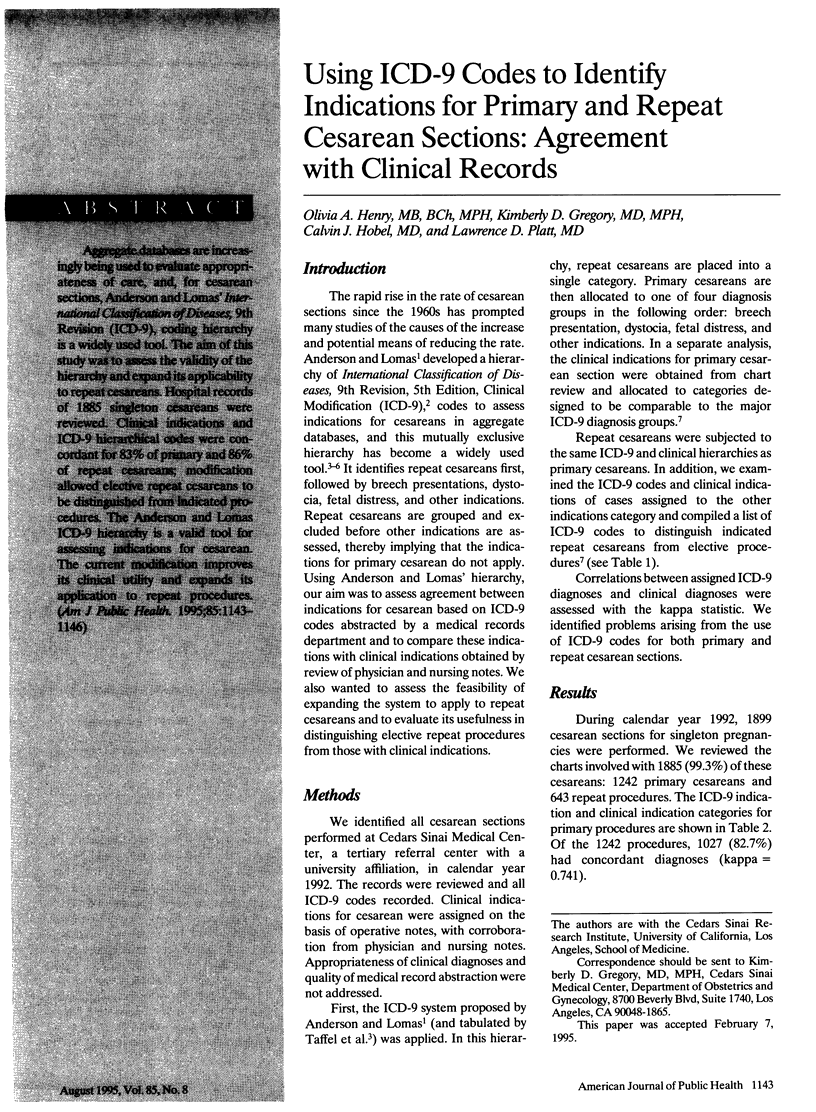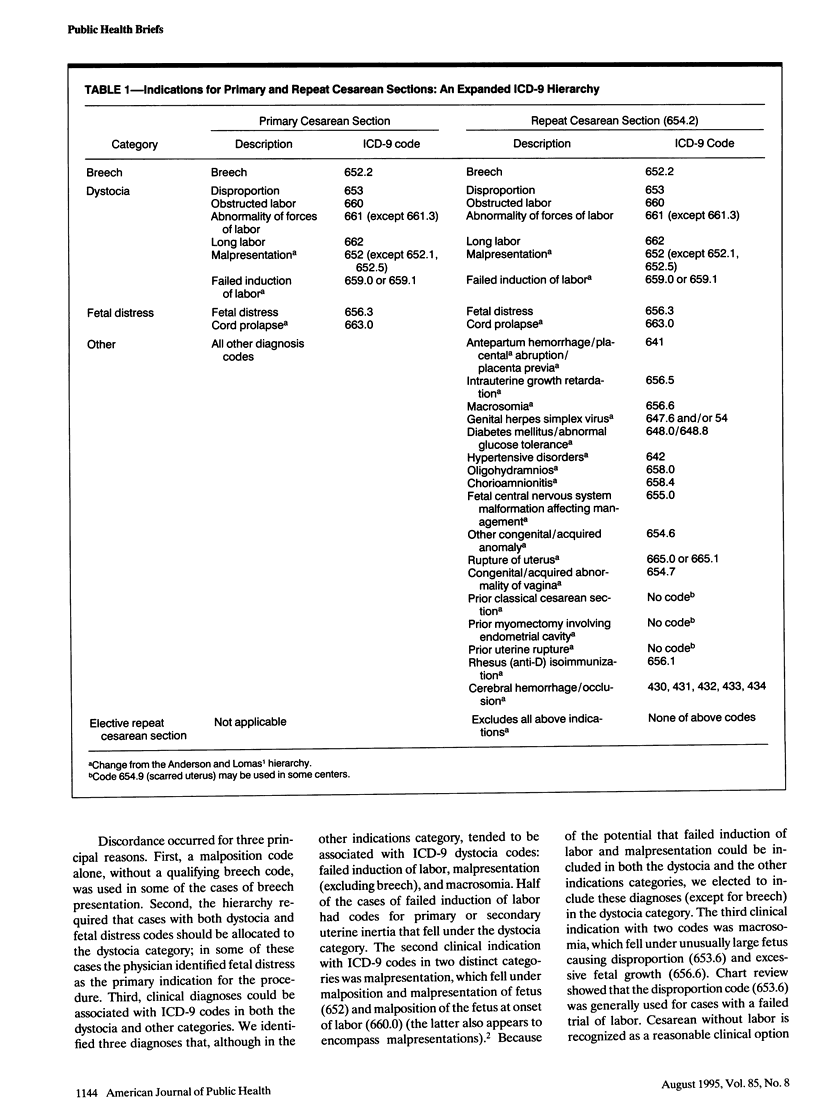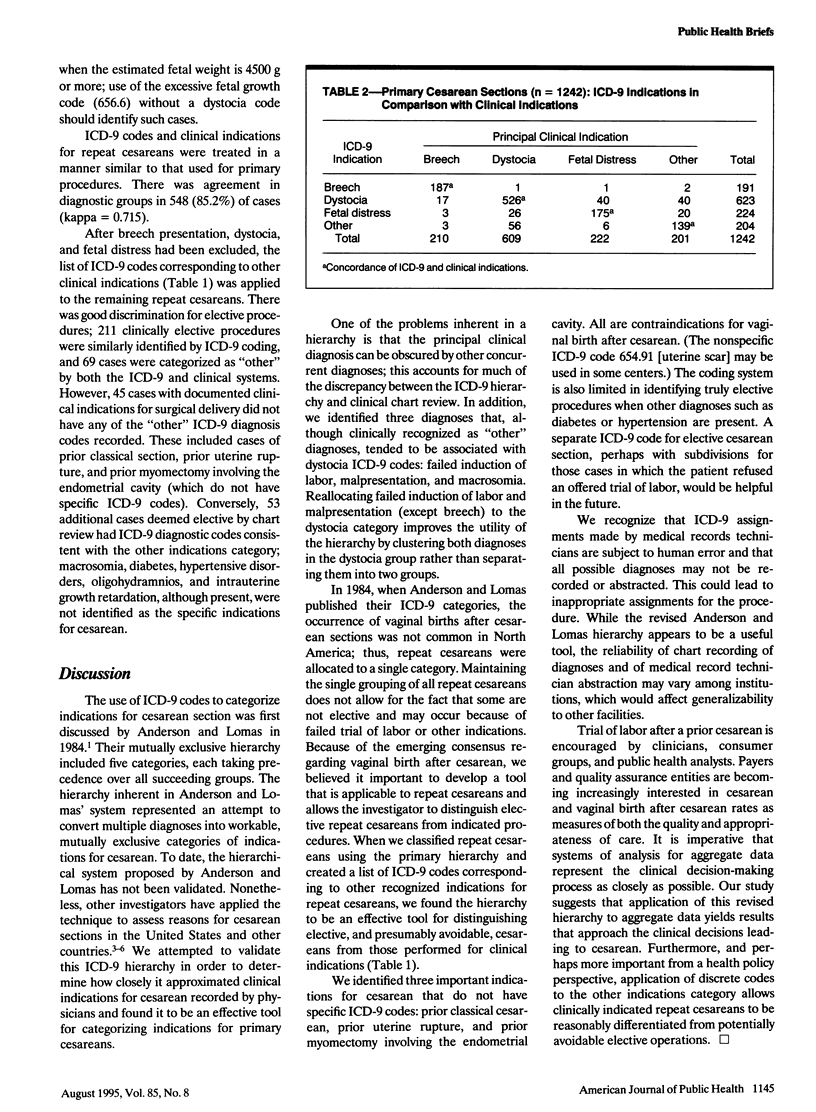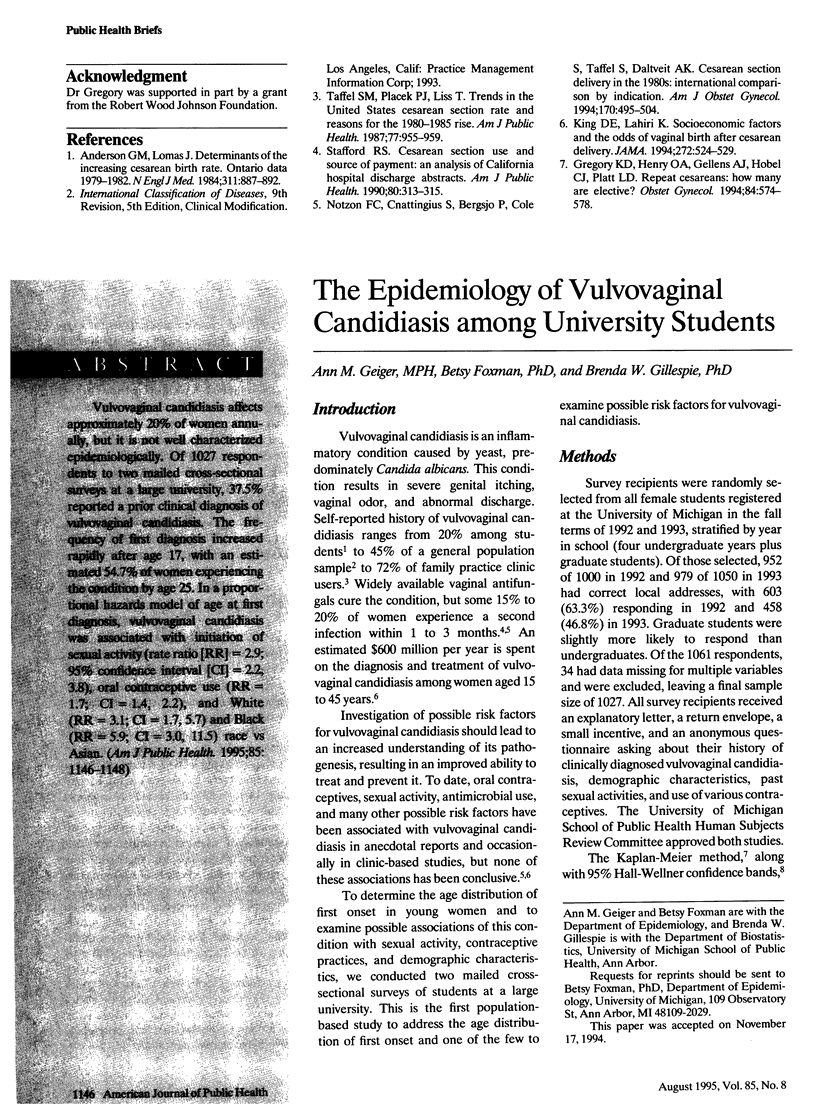Abstract
Aggregate databases are increasingly being used to evaluate appropriateness of care, and, for cesarean sections, Anderson and Lomas' International Classification of Diseases, 9th Revision (ICD-9), coding hierarchy is a widely used tool. The aim of this study was to assess the validity of the hierarchy and expand its applicability to repeat cesareans. Hospital records of 1885 singleton cesareans were reviewed. Clinical indications and ICD-9 hierarchical codes were concordant for 83% of primary and 86% of repeat cesareans; modification allowed elective repeat cesareans to be distinguished from indicated procedures. The Anderson and Lomas ICD-9 hierarchy is a valid tool for assessing indications for cesarean. The current modification improves its clinical utility and expands its application to repeat procedures.
Full text
PDF



Selected References
These references are in PubMed. This may not be the complete list of references from this article.
- Anderson G. M., Lomas J. Determinants of the increasing cesarean birth rate. Ontario data 1979 to 1982. N Engl J Med. 1984 Oct 4;311(14):887–892. doi: 10.1056/NEJM198410043111405. [DOI] [PubMed] [Google Scholar]
- Gregory K. D., Henry O. A., Gellens A. J., Hobel C. J., Platt L. D. Repeat cesareans: how many are elective? Obstet Gynecol. 1994 Oct;84(4):574–578. [PubMed] [Google Scholar]
- King D. E., Lahiri K. Socioeconomic factors and the odds of vaginal birth after cesarean delivery. JAMA. 1994 Aug 17;272(7):524–529. [PubMed] [Google Scholar]
- Notzon F. C., Cnattingius S., Bergsjø P., Cole S., Taffel S., Irgens L., Daltveit A. K. Cesarean section delivery in the 1980s: international comparison by indication. Am J Obstet Gynecol. 1994 Feb;170(2):495–504. doi: 10.1016/s0002-9378(94)70217-9. [DOI] [PubMed] [Google Scholar]
- Stafford R. S. Cesarean section use and source of payment: an analysis of California hospital discharge abstracts. Am J Public Health. 1990 Mar;80(3):313–315. doi: 10.2105/ajph.80.3.313. [DOI] [PMC free article] [PubMed] [Google Scholar]
- Taffel S. M., Placek P. J., Liss T. Trends in the United States cesarean section rate and reasons for the 1980-85 rise. Am J Public Health. 1987 Aug;77(8):955–959. doi: 10.2105/ajph.77.8.955. [DOI] [PMC free article] [PubMed] [Google Scholar]


